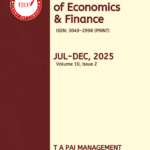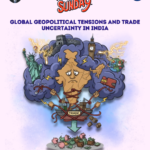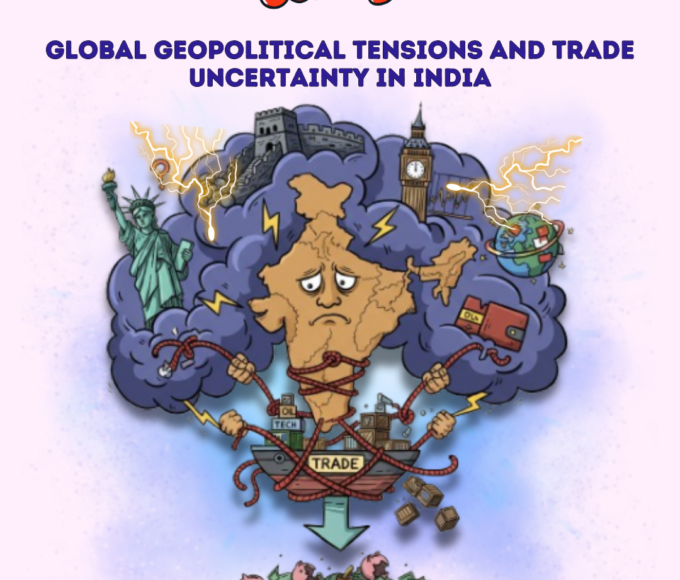
A merger is a concoction of two companies to form a single entity where both assets and liabilities are merged together.
In an acquisition, one company “takes over” another company where assets and liabilities of the acquired company become part of the “acquirer” company.
There are 4 different types of M&A:
- Horizontal: Horizontal M&A happens between companies engaged in the same business activity and competing with each other. e.g., HP-Compaq, Arcelor-Mittal, etc.
- Vertical: Vertical M&A happen between companies engaged in different segments of a product value chain so as to integrate the entire value chain. e.g., Reliance Industries Limited (RIL)-Reliance Petroleum Industries (RPL).
- Concentric: It happens when two companies operate in complementary industries and their products are used by the same/similar customers. e.g., Sony- Columbia Pictures.
- Conglomerate: Conglomerates arise when companies that are in diversified industries with no visible synergy merge with one another. The business of the target company is entirely different from the acquiring/merging company. E.g., ITC Bhadrachalan-ITC.
History of Merger Waves:
In the past century, M&A activities have manifested a clustered pattern which is delineated as a wave and they betide in a burst interspersed with relative inactivity. There were six radical M&A waves. Premiere four transpired between 1897 and 1904, 1916 and 1929, 1965 and 1969, and 1984 and 1989.
The first merger wave betided after the protracted depression of 1873–1883, culminated between 1898 and 1902, and concluded in 1904.F

Source: Merill Lynch Business Brokerage and Valuation, Mergerstat Review,1989
During the second merger wave (1916-1929), multifarious industries were consolidated. George Stigler, the late Nobel prize-winning economist, contrasted the first and second merger wave as “merging for monopoly” versus “merging for oligopoly.” Throughout the duration of this period, the American economy perpetuated to metamorphose and transmogrify, predominately because of the post–World War I economic boom, which proffered copious investment capital for fervently interluding securities markets.
The third merger wave (1965-1969) attributed a historically extortionate magnitude of merger activity. These years were often known as the conglomerate merger period as it was recurrent for proportionately smaller firms to target larger companies for acquisition. In contrast, during the two earlier waves, a majority of the target firms were significantly miniscule than the acquiring firms.


Source: Merill Lynch Business Brokerage and Valuation, Mergerstat Review,1989
The sui generis trait of the fourth wave (1984-1989) lies in the conspicuous role of hostile mergers. The downward trend that characterized M&As in the 1970s through 1980 back-pedalled keenly in 1981. Although the rapidity of mergers decelerated again in 1982 as the economy grew frail, a brawny merger wave had taken hold by 1984.
Commencing in 1992(Fifth wave, 1992-2000), the number of M&As once again began to ameliorate. The prodigious deals, some similar in quantum to those that transpired in the fourth merger wave, emerged to eventuate afresh. During the 1990s, the U.S. economy entered into its longest post-war augmentation and companies reacted to the proliferated assemblage demand by pursuing M&As.
The Sixth Merger Wave (2003-2008) took place on the heels of the recovery period of the dotcom bubble. Globalization, private equity, and shareholder activism were the pivotal proclivity that defines the sixth wave.
Global M&A deals and Rationale behind deals

Recently one of the strategic drivers of M&A deals has been acquiring technology assets. 20% of deals cite the acquisition of technological assets as the cardinal impetus behind deals, up from 6% in the spring of 2016.
The proliferation of customer bases in existing markets, and also an inclusion to product offerings or diversification of services, rank as the next two strategic imperatives.
Two other consequential drivers that corporate respondents cite as a raison d’etre behind deal-making are:
- Digital strategy, a new response option for what is driving deals, ranked number four in importance, with 12% citing it as the most important driver.
- Acquisition of talent has more than doubled in importance from the spring of 2016, increasing from 4% to 9%.

The prime influencers behind the deals in 2017 are:
- One of the key influences on global M&A activity in 2017 was a significant 62% plummet in Chinese investment in Europe and the US (the 2 biggest M&A markets), as compared to the record-breaking levels reached in 2016.
- Private equity played its part in shaping the M&A landscape in 2017 showing the highest buyout value since 2007 and also the highest exit value on record.
- Brexit has continued to have an impact on M&As both in the UK and overseas. The depressed value of the Sterling has promoted an uptick in inbound M&As in the UK, resulting in the highest level on record in 2017.



F

Global M&A have had a positive start in the first quarter of 2018 with deal value ameliorating to $1.2trillion in value. U.S. tax reforms and faster economic growth in European countries unbridled many companies’ deal making instinct.
Swelling cash coffers and hefty debt and equity markets succoured to boost the confidence of chief executives and convince them that now was a good time to pursue transformative mergers. F

According to Thomson Reuters data, though the number of deals globally plummeted by 10% to 10,338 y-o-y in the first quarter of 2018, the value of the deals burgeoned by 67% on y-o-y basis.
Brobdingnagian deals that consummated in the 1st quarter of 2018 were those of U.S. health insurer Cigna Corp’s $67 billion deal to acquire U.S. pharmacy chain Express Scripts Holding Co, and German utility E.ON SE‘s $38.5 billion deal to acquire RWE AG‘s renewable energy business Innogy SE. In the first quarter of 2018, M&A volumes ameliorated by 67% in the US, 11% in Asia and almost doubled in Europe.
The two largest proposed deals this year are the $65billion deal of Disney to acquire Fox and the $85.4billion deal of AT&T to buy Time Warner.
M&A Consolidation Game in Indian Context
Indian M&A ended the year 2017 on an optimistic note with 1,022 deals clocking a disclosed value of US$46.8 billion. While the deal volume attained a record acme (as compared to 895 deals in 2016) since 2010, the deal value was lower by 12% from US$53.2 billion in 2017. Deals aimed at market proliferation and entry into new untapped markets, digital disruption and sector convergence, were the cardinal drivers of deal-making during the year.
The amelioration in deal count can be largely attributed to the powerful deal activity in the domestic arena throughout the year, showcasing the preference of the local market for businesses, driven by a stable economy and optimistic deal market fundamentals. The year 2017 fared well on the value front as well as with the yearly performance, which was in line with the median average of the previous few years. Keeping in mind 2016s outstanding activity in value terms, the decline in deal value during 2017 can be primarily attributed to a fewer number of big-ticket deals (US$500 million and above). The year 2017 recorded 13 big-ticket deals as compared to 21 in 2016. Also, other factors such as the uncertainty resulting from GST implementation and the lagged effects of demonetization, heightened intensity of diligence in multiple areas and delays in approval processes also had an unfavourable impact on deal timelines.
Domestic deals continued to predominate the Indian M&A landscape, as home grown companies preferred inorganic route to achieve growth. In terms of volume, 2017 saw 682 deals accounting for around 67% of the gross deal volume. The domestic deal value stood at US$37.9 billion, constituting for more than 3/4th of the total disclosed value, a first time phenomenon ever in the Indian M&A deal market. Interestingly, 127 deals (totalling US$10 billion) out of the total domestic deals were restructuring in nature, constituting around 19% of the domestic deal volume and 27% of the deal value. The local M&A market saw US$3 billion plus deals during the year, totalling US$5.3 billion.
Indian Companies- M&A deals

Source: Capital IQ, Bloomberg, PwC Analysis
BSE 500 Companies- M&A deals

Source: Capital IQ, Bloomberg, PwC Analysis
Overall and BSE500 deal multiples

Source: Capital IQ, Bloomberg, PwC Analysis
More than 2/3rd of BSE500 companies have pursued M&As during this FY10-18 and some of them made colossal bets on a few large targets whereas others are either selective or prolific acquirers. This sets of surviving companies can be further classified into 4 categories:
- Opportunistic Acquirers (less than 5 acquisitions – 50% of companies)
- Habitual Acquirers (more than 5 acquisitions – 15% of companies)
- Transformative Acquirers (at least 1 Large deal [defined as marquee deals in each sector and deals with sizes greater than the average deal size]– 3% of companies)
- Organic Growers (no M&A activity – 30% of companies)
BSE 500 EBITDA%

Source: Capital IQ, Bloomberg, PwC Analysis
Sector wise Total Shareholder Return

Source: Capital IQ, Bloomberg, PwC Analysis
The Domestic destination is the most preferred destination with 7 deals contributing around 60% of the total deal volumes in 2017. Out of these 7 deals, 2 of the deals are merger (Vodafone India – Idea Cellular & Bharat Financial Inclusion Limited – IndusInd Bank Limited). The 2nd largest deal of this year has been the 51% stake-purchase of ONGC in BPCL.

Source: EY analysis of Thomson ONE data

Source: EY analysis of Thomson ONE data
Conclusion:
The years 2016 and 2017 have been the most promising years for M&As and looking into 2018, we can conclude that this year has been as promising as the previous two years. Recent global political turmoil, regulatory and policy changes by different nations are responsible for certain disruptions of macroeconomic parameters, which have been the pivotal impetus behind the deals.
Reference:
- Value creation: Laying the foundation for mergers and acquisitions. PwC Report, 2018.
- Transactions Annual Highlights of 2017 and outlook for 2018, EY, 2018
- Smita Kashiramka and N V Muralidhar Rao, Shareholders Wealth Effects of Mergers and Acquisitions on Acquiring Firms in the Indian IT and ITeS Sector
- Xin XU1, Yong-jin LIANG, Shun-lin SONG, What Drives Mergers & Acquisitions Waves of Listed Companies of The Chinext Market? IPO Over-Financing or Stock Overvaluation, 2018
- David R. King, Svante Schriber, Addressing Competitive Responses to Acquisitions, 2016

















Leave a comment